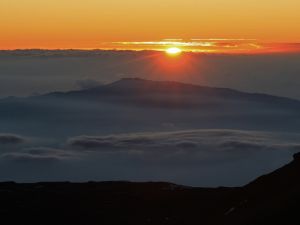Measurement of ENSO-related climate conditions and ecosystem responses in Hawaiʻi

Research also suggests that short-duration extreme climate events that cause changes in moisture, such as El Niño, can control the upper limit of forests more than long-term average climate does. This is because species found at the forest line are often already near their physiological limits, so extreme changes can have a big effect on their survival.
A strong El Niño occurred in Hawaiʻi in 2015 and provided researchers with a unique opportunity to observe how vegetation responds to ensuing climate variability. Researchers are focusing on Metrosideros polymorpha (ʻōhiʻa lehua), a species of flowering evergreen native to Hawaiʻi. This species is the dominant canopy tree found near the forest line and will be used as an indicator for how the forest line responds to El Niño-driven drought. Specifically, the objectives of this study were to:
(1) Observe the climate and ecosystem processes at locations near and above the forest line on Haleakalā during an El Niño event.
(2) Determine how the ecosystem responds to changes in climate, such as drought, caused by El Niño.
(3) Determine whether plant responses to short-term changes in climate and drought vary along the cross-slope rainfall gradient.
PROJECT DETAILS
FUNDED:
FY2014
PI:
Thomas Giambelluca
Professor of Geography, UH Mānoa
Co-I:
Shelley Crausbay
Lead Scientist, Conservation Science Partners

